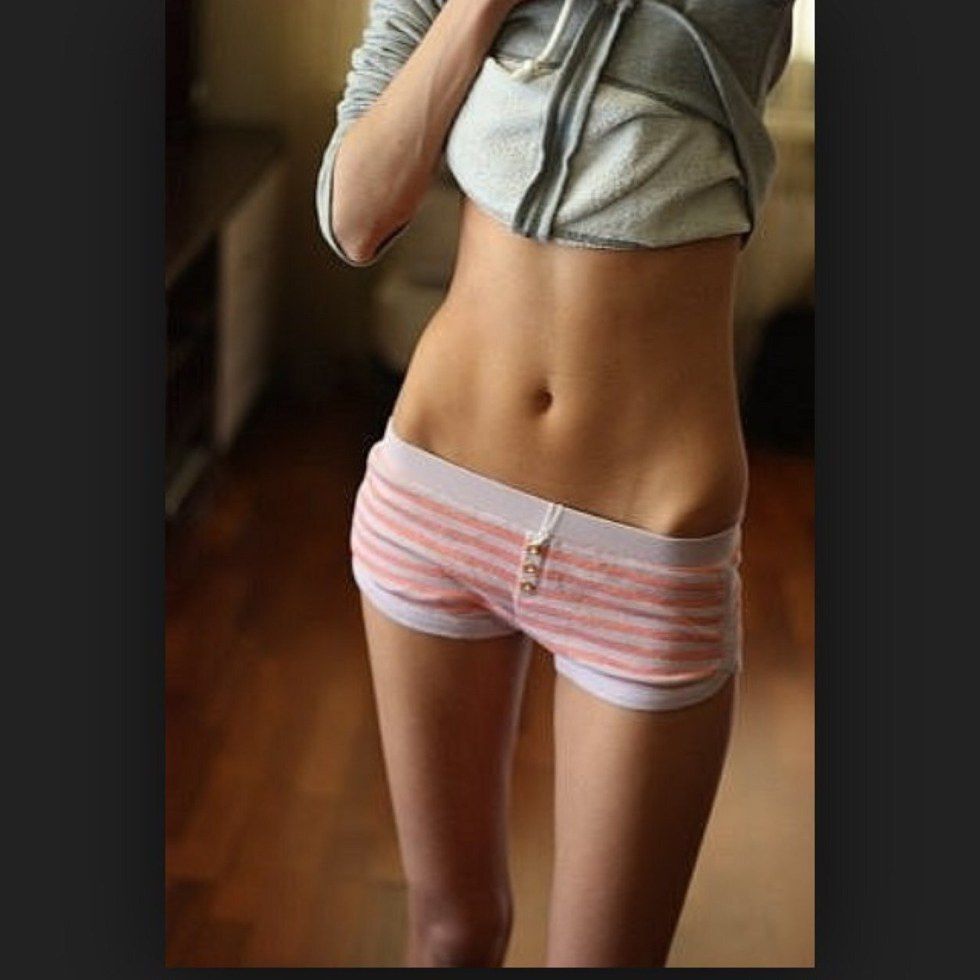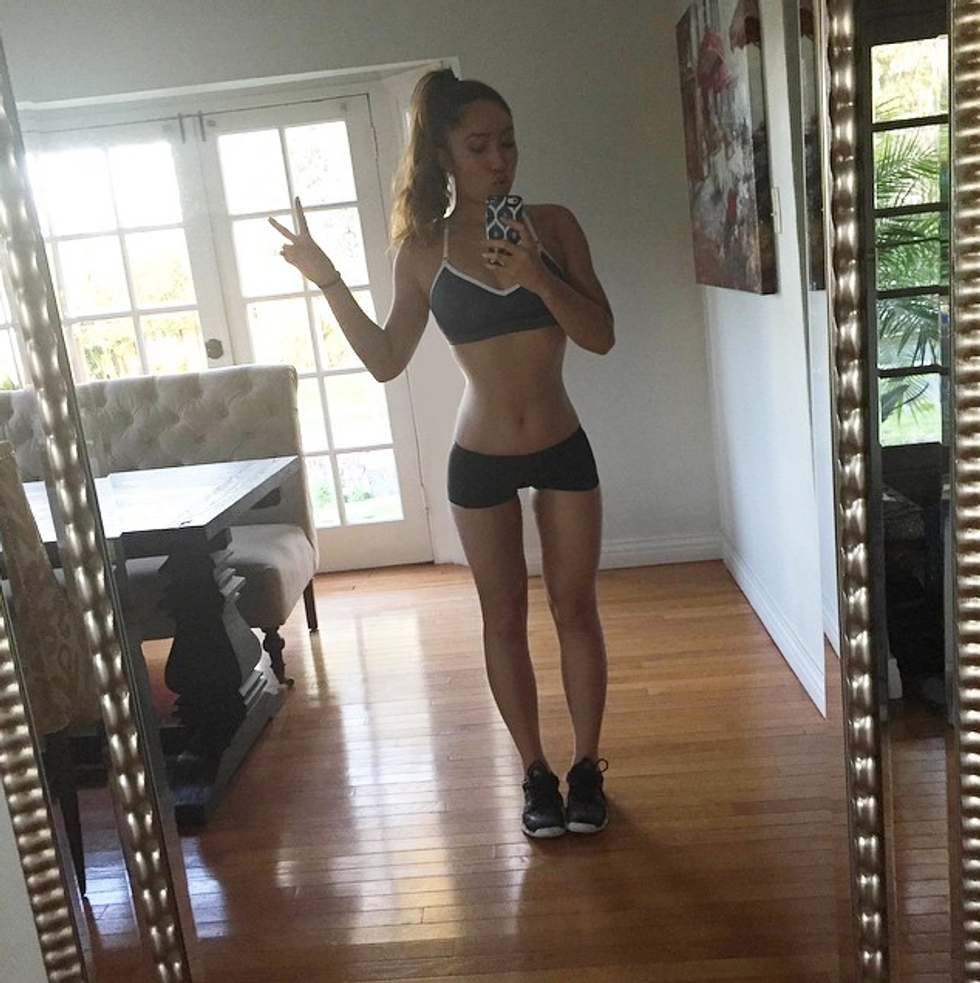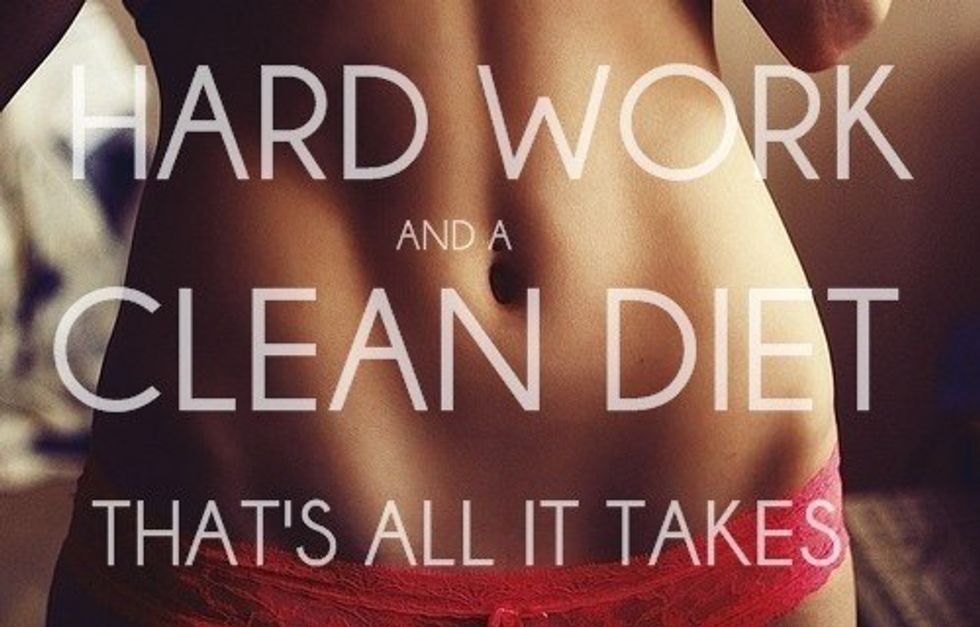Hey pals, before you read this article please be warned that there are some images that could be triggering. As much as I want my voice to be heard, I want you to stay safe.
Much love,
Erin
+*+*+*+*+*+*+*+*+*+*+*+*+*+*+*+*+*+*+*+*+*+*+*+*+*+*+*+*+*+*+*+*+*+*+*+*+*+*+*+*+*+*+*+*+*+*+*+*+
According to US News, "Fitspiration" can be defined as:
"any message whose supposed intent is to encourage or inspire people to attain their fitness goals. Often these messages are tacked onto an image of a hyper-fit person engaged in some impressive physical feat."
That sounds innocent enough, right? Nope.
Growing up in a world shaped by social media, millennials are very familiar with blogs advocating for a certain movement. When I was in high school, probably my freshman year, I began hearing about the "thinspiration" craze on the Internet. Curious, I typed "thinspo" into Google and gasped quietly at what I saw on the screen.
Emaciated, frail, and sickly looking girls proudly baring their hipbones for all the world to admire. Captions read "nothing tastes as good as skinny feels" or "Better skinny than sorry." I was particularly fascinated by the obsession with thigh gaps, something I had never really acknowledged as a thing of beauty. I knew that these girls were unhealthy, and if I looked like them I could not hope to achieve my goal of running a 10k.
A few years passed, and a new trend swept across the Internet: Fitspiration. Now this, I thought to myself, is a movement I can get behind. Fitspo blogs and Instagram accounts feautured tanned, toned, and beautiful women in spandex lifting weights, running, or just looking fit. I wanted to be like these women. Fitspo sends a healthy message because it is motivating you to get in shape, right? Not exactly. The sad thing about fitspo is that it is really just a more culturally accepted version of thinspo. Because the focus is on getting fit, we tend to overlook the hidden messages within fitspo.
For example, fitspo models are always thin, tan, and beautiful women, which implies that this is what a fit woman looks like. Yet, there are many women, many of which are Olympic athletes, who are much bigger than these models. Does this mean that they are not fit? Fitspo disregards other body types, while instead painting abs onto the thinspo girls and putting them into a pair of yoga pants. Fitspiration also sexualizes a woman's body, often showing her running on the beach in nothing but a bikini. That is just not the way running works. If I were to run in a bikini I would not look cute, and I would be bouncing all over the place. This applies to most women, and yet most fitspo women continue to frolick in their bathing suits. It is unrealistic and it is making perfectly fit women feel ashamed of their bodies because it does not look a certain way.
In the past, I have emphasized the importance of body positivity and loving your body no matter how it looks. Body positive movements are shattering thinspo's hold on society and making women feel better about their shape. However, I firmly believe that in order to the body positive movement to be truly effective, these images of more average women need to be spread to fitspo blogs too. You do not need to be thin to be fit, and you do not have to be fit to be beautiful.
The truth of the matter is that fitspo is just as dangerous as thinspo, if not more dangerous, because it glorifies pain and pushing yourself until you vomit or pass out. I love the gym; I love the rush that I get when I'm in a spinning class or lifting weights. But I do not have to look like the Lululemon models to know that I am in shape. The saying "no pain, no gain" has helped to build fitspo into what it is today, and people need to realize that it is not as healthy as it claims to be.
So, go work out, go eat healthy, but do not degrade yourself if you do not look like the women in your fitness blogs. Your body is strong, beautiful, and it can do amazing things just the way it is.


























